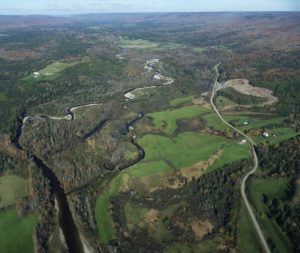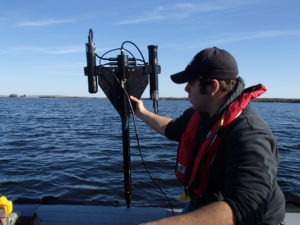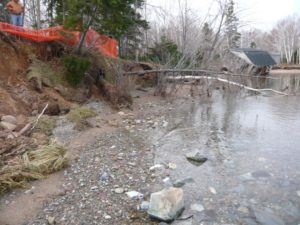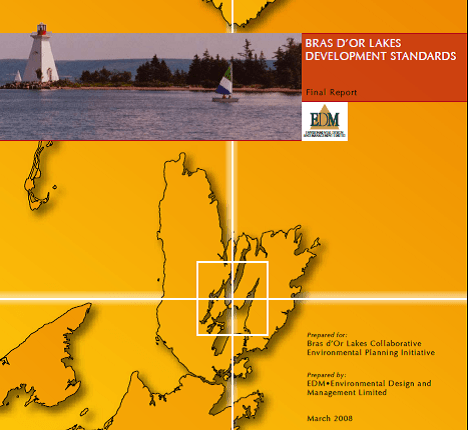Climate Change Adaptation, Guidelines & Best Practices

June 19 – 21, 2019 saw the launch of the Climate Change Adaptation Forum hosted by the BLBRA and CEPI (Collaborative Environmental Planning Initiative) to extend our initiative to encourage best practices in the Bras d’Or Lake Biosphere. Over the three days, the forum was held in Baddeck, Wagmatcook and Cape Breton University. Welcoming representatives from other Canadian UNESCO biospheres as well as Indigenous Circle representatives, a contingent of local indigenous youth and members of the public, the forum provided a number of leading experts to address the gathering followed by round table discussions on the problems and possible solutions presented by climate change in the various biospheres. The goal of the forum was to develop a set of guidelines on adapting to climate change with the hope that they can be used by all the biospheres and hopefully shared with other communities across the country. To give you a better perspective of the forum, you can access the forum Information Package by downloading it below.
There are several outputs from the Forum. Videos have been produced to showcase the speakers and participants. Also, a detailed summary of the proceedings gives information on what was discussed and synthesizes the many trains of thought that wove through the discussions. It was decided that another report should be created, one that proposes guidelines for climate change adaptation projects within UBRs in Canada, as well as for communities within those UBRs. That report is immediately below.
Climate change presents a number of challenges to adaptation for Canada’s UNESCO Biosphere Regions (UBRs). Their role as stewards of ecosystems and champions of sustainable development requires a response to an increasingly dire change in those ecosystems.
Current Monitoring and a Collection of Best Practices
Education is a priority area for the BLBRA with the goal to promote sustainable development. By using “best practices” residents help to achieve a healthy society, healthy culture, healthy economy, and healthy environment within the biosphere. As we seek to maintain and enhance the health of both the biosphere’s watershed and its estuary, the Bras d’Or Lake, we measure success by adopting these best practices.
Key to our adopting best practices in the biosphere is understanding the link between the watershed and the lake itself. That link is water, our most important resource. The following two articles by Fred Baechler and Dr. Bruce Hatcher will give the reader a good overview of the current monitoring situation for both fresh and salt water in the Bras d’Or Lake Biosphere. These two articles are followed by a collection of other best practice articles by various contributors from within the BLBRA.
Perspectives on Fresh Water in the Bras d’Or
by Fred Baechler, Chief Hydrologist for EXP. Services Inc.

The key to managing and protecting the fresh water resources of our Biosphere is based upon the concept that ‘You can’t effectively manage what you only have a limited understanding of. To develop that understanding requires a discussion around five key perspectives.
Monitoring The health of the Biosphere – Water Quality
by Dr. Bruce Hatcher, Director of the Bras d’Or Institute, CBU.

Monitoring the quality of the water in the Bras d’Or estuary gives us an indication of its’ health. We can estimate the amount of plant and animal production, and predict the suitability of the habitat for organisms ranging from bacteria to sea turtles.
The Global Picture. A Word or Two about Setbacks
by Dr. Jim Foulds

When we develop land near water it is important to leave as much natural vegetation between the water and where you clear the land or build. This provides a buffer for the lake or stream. The buffer will reduce and filter runoff, stabilize lake/stream banks, maintain the chemical, physical and biological integrity of water resources and provide habitat for shoreline wildlife. All too often, we clear land all the way to the shore and that leads to greater shoreline erosion and excess sediment going into the lake or stream. The buffer can’t be too wide but the minimum recommendation – as a best practice – is 30 metres or 100 feet.
2008 CEPI Bras dOr Development Standards Final Report

The Bras d’Or Lakes are a unique series of estuarine bodies linked together to form an irreplaceable coastal ecosystem in the middle of Cape Breton Island. The unique combination of natural and cultural assets in the watershed has won world renown. National Geographic Traveler magazine has rated Cape Breton Island its Number 2 worldwide destination for sustainable tourism, along with New Zealand’s South Island and Torres del Paine in Chile, following the Norwegian fjords.
Although water quality in the Bras d’Or Lakes is generally good, a study by CEPI/Unama’ki found that nearly 55 per cent of sub-watersheds feeding the lakes have recently experienced some measure of decline in water quality. Several key factors influence the natural state of the water, such as the restricted exchange with the ocean, the wind, and the freshwater input sources.
Click on title above to download this report.
The Local Picture. A Word or Two about Water Supplies
by Lynn Baechler
The watershed of the Bras d’Or Lake is underlain by a variety of rock types. Some geologic units (rock types) offer a good potential for water supplies, others not. It seems most folks want to live adjacent to the Lake. These lowland areas are typically underlain by shales, siltstones and sandstones interbedded with limestones, gypsum and some salts. These rocks may, but not always, yield low volumes of poor quality water. Sometimes, salt water intrusion becomes an issue if a well is in close proximity to the shore. As the land raises away from the Lake more resistant rocks (igneous and metamorphic rocks and some conglomerates) are the norm. Depending on the frequency of fractures, a well drilled in these more resistant rocks may yield low to moderate volumes of potable water.
Dark skies at night, star gazers delight: Best Practices
by Dr. Annamarie Hatcher

In ancient cultures, unencumbered vision of the changing night skies was necessary to navigate and to determine optimal planting, hunting and harvesting times. In the modern world of GPS and centralized weather prediction we often place a low value on being able to see the patterns in the night sky. However, interfering with a clear night vision of the skies impacts many aspects of the ecosystem.
